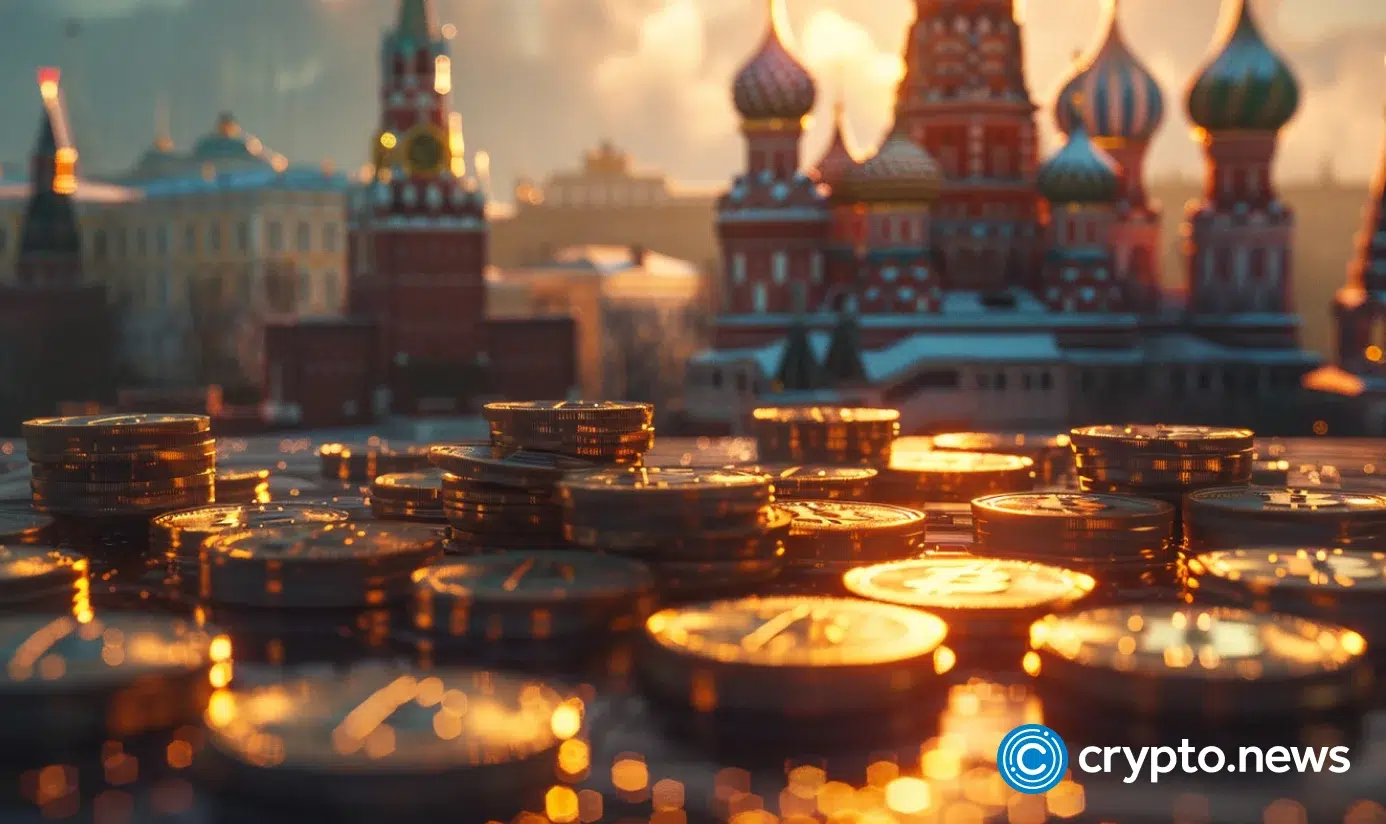
The European Union has targeted Russia’s largest sanctioned crypto exchange, though analysts note it has operated successfully under sanctions for years.
On Monday, Feb. 24, the European Council introduced the 16th sanctions package, adding Russian cryptocurrency exchange Garantex to the list as it’s “closely associated with EU-sanctioned Russian banks.”
Garantex appears to be one of the largest Russia-based crypto exchanges operating within the Kremlin’s view. The exchange has offices in Moscow’s Federation Tower skyscrapers and offers deposits and withdrawals of cash rubles to Russian bank cards, including Sberbank, Tinkoff, and Alfa-Bank, according to its website.
The European Council’s sanctions against Garantex come two years after the exchange was blacklisted by the U.S. Treasury’s Office of Foreign Assets Control in 2022.
‘Won’t have a major impact’
Co-founded in late 2019 by Russian tech expert Stanislav Drugalev and Sergey Mendeleev, a former KGB officer, the exchange was originally based in Estonia and has long been under scrutiny for its role in facilitating illicit transactions.
Per data from U.S.-based blockchain intelligence firm Chainalysis, the exchange helped facilitate payments linked to ransomware gangs and darknet markets, including the notorious Hydra marketplace, which was shut down in April 2022. According to different resources, Garantex was also used by various criminal organizations and terror groups, including Hezbollah.
Speaking with crypto.news, Chainalysis head of national security intelligence Andrew Fierman pointed out that Garantex remains active “years after the U.S. and U.K. sanctioned it.”
“The E.U.’s move, while driving more sanctions requirements for E.U. entities, likely won’t have a major impact on Garantex’s overall operations. However, it is symbolic of the E.U.’s efforts to maintain economic pressure on Russian financial services and now, cryptocurrency exchanges.”
Fierman notes that trust plays a “significant role in the Russian cryptocurrency ecosystem.” He also added that despite the latest sanctions, Garantex will continue to have a “big part as long as it is operational.”
“Garantex is generally a trusted platform within Russia and has stable liquidity reserves, making it unlikely users would move away from the platform now. As we’ve seen with other exchanges in Russia, like Berebit, which halted withdrawals, and offered their customers chocolate instead and was later taken down by Russian law enforcement, or organizations impacted by international law enforcement efforts, such as Germany’s BKA dismantling 47 smaller, no-KYC platforms, users will likely flock to services where their money is most secure.”
Garantex’s trustworthiness isn’t just tied to its long-standing presence in Russia but also to its apparent backing from the Kremlin. A March 2024 investigation by Eesti Ekspress and the International Consortium of Investigative Journalists uncovered links between Garantex affiliates and the Russian government. The report found that one of the exchange’s co-founders died under mysterious circumstances, and soon after, another shareholder with ties to Rosneft, the Kremlin-controlled oil giant, took control of the company’s records.
Richard Sanders, a U.S.-based digital forensics analyst, pointed out that the Russian government likely has a vested interest in allowing Garantex to operate.
“The intelligence value that can be obtained by the Russian government far outweighs their desire to prosecute criminals that by and large profit off of what the government considers to be unfriendly nations. Garantex has dark[net] markets and ransomware groups as top clients.”
Garantex has defended its operations, claiming it actively works to prevent illicit activities and cooperates with international law enforcement agencies, per the investigation. However, the U.S. Treasury sanctions from April 2022 highlighted the exchange’s role in facilitating illicit transactions.
According to George Voloshin, a financial crime analyst at the Association of Certified Anti-Money Laundering Specialists, Garantex operates similarly to informal money-transfer networks, often referred to as “hawala” systems, which avoid regulation and traditional financial oversight.
Isabella Chase, head of policy for U.K. and E.U. at blockchain forensic firm TRM Labs told crypto.news in a commentary that despite being sanctioned by the U.S. in 2022, Garantex continues to process “billions in transactions annually, allowing cybercriminals and sanctioned entities to launder illicit funds with minimal oversight.”
According to data from TRM Labs, Garantex and Iranian crypto exchange Nobitex accounted for over 85% of inflows to sanctioned entities and jurisdictions.
“The E.U.’s sanctions on Garantex aim to further restrict its ability to operate internationally, increasing the difficulty of laundering illicit funds. However, enforcement is key — without strong international cooperation, cybercriminals may shift their activity to alternative non-compliant exchanges or decentralized platforms. Garantex is not the only option for bad actors.”
Isabella Chase
While TRM Labs has identified the exchange as a major facilitator, other underground banking networks, peer-to-peer platforms, and decentralized finance services also “remain alternatives for criminals looking to move funds,” TRM Labs noted.
Despite efforts to appear cooperative with law enforcement, Garantex’s deep ties to the Russian government and questionable actors raise concerns, with analysts warning that its ongoing operation under Kremlin oversight threatens international security and the global crypto market.